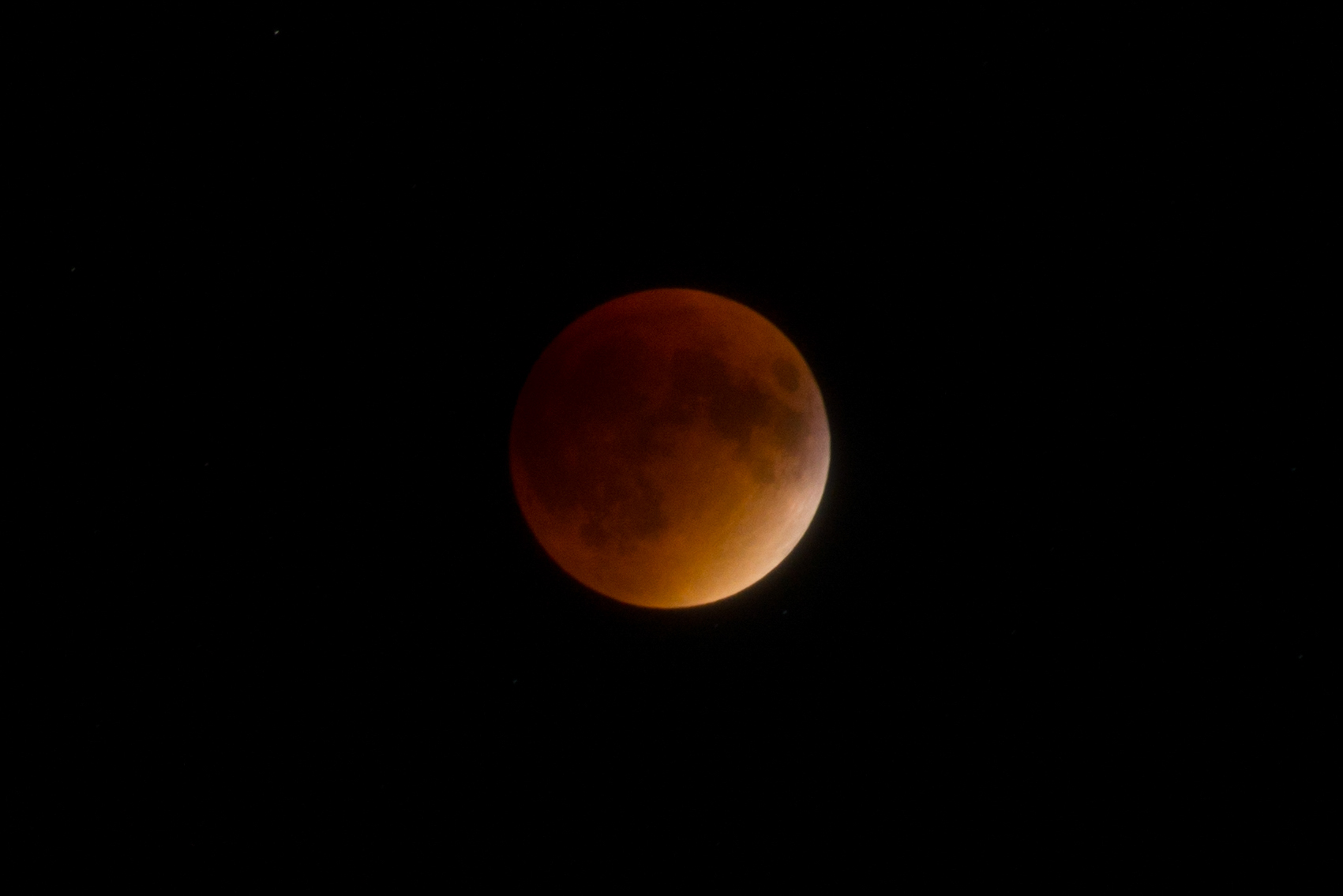“Blood Moon” eclipse viewing brings hundreds to campus
 SUNY New Paltz opened the doors of the Smolen Observatory for a special public viewing of the total lunar eclipse that took place Sept. 27.
SUNY New Paltz opened the doors of the Smolen Observatory for a special public viewing of the total lunar eclipse that took place Sept. 27.
The event was organized by the Department of Physics & Astronomy and elicited a turnout of nearly 400 students and community members to the Observatory and the College’s soccer fields, said Assistant Professor Amy Forestell Bartholomew.
“The total lunar eclipse was the Observatory’s largest event to date,” Bartholomew said. “People spread out into the soccer fields, laying on blankets to look up at the moon. We had our four observatory telescopes in constant use, and several members of the Mid-Hudson Astronomical Association set up their telescopes as well. When the clouds rolled in about halfway through the eclipse, the crowd loudly applauded the ‘show’ before heading home.”
 The eclipse coincided with the occurrence of a “supermoon,” when the Moon is in the closest part of its orbit to Earth and therefore appears larger than usual in the night sky. This rare convergence of events, which also lends the so-called “Blood Moon” its reddish-orange hue, last happened in 1982 and will not take place again until 2033.
The eclipse coincided with the occurrence of a “supermoon,” when the Moon is in the closest part of its orbit to Earth and therefore appears larger than usual in the night sky. This rare convergence of events, which also lends the so-called “Blood Moon” its reddish-orange hue, last happened in 1982 and will not take place again until 2033.
About the Smolen Observatory
The Muriel and Jack Smolen Observatory opened in 2010 thanks to a bequest from Muriel Smolen. It honors the memory of her husband, Jack, who constructed the telescope’s optics and iron framework. Completed in 1963, the telescope sat in the Eagle’s Next Observatory and was generously made available to the students, faculty and staff of SUNY New Paltz by the Smolens. Today the Smolen Observatory houses Jack’s original 10-inch telescope, a 14-inch Celestron Schmidt Reflecting telescope on a Paramount mount and two eight-inch Dobsonian telescopes.
The Smolen Observatory supports the College’s Astronomy program and is opened to the public for viewings on Astronomy Nights, the first and third Thursday of each month that the College is in session (weather permitting). More information is available at www.newpaltz.edu/observatory.

